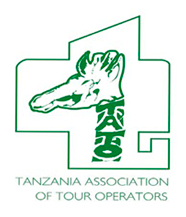Africa travel is one of the most thrilling experiences a traveler could ask for. Africa’s diverse landscapes, its wide range of wild animal life, its geographic, topographical , and geological features, its moderate to warm climate with short and long rainy seasons, and its cultural diversity make it a place that is unique to adventure travelers. As vast areas of Africa’s interior are remote and undeveloped , it invites great mystery and intrigue for the curious traveler looking for natural, pristine, and unspoiled environments.
Africa’s Diverse Physical Features
The African continent is comprised of 62 political territories and is the largest land mass projecting southward on earth with a north-south length of 5,000 miles and an east-west length of 4,600 miles. Its average elevation is 2,000 feet above sea level. Its most distinctive physical feature is the Great Rift Valley that formed about 30 million years ago cutting a 30-40 mile wide and up to a mile deep gaping geological depression running north-south from the Jordan Valley southward 4,000 miles to Mozambique. It is responsible for creating some of the oldest and deepest lakes in the world including Lake Victoria, Lake Tanganyika and Lake Malawi in sub-Saharan East Africa. Africa’s diverse physical features also include the savannahs in the tropical and sub-tropical regions of central Africa, vast deserts such as the Sahara desert in the north and the Kalahari desert in the south, mountain ranges such as the Atlas Mountains in northwest Africa and the worlds largest free standing mountain, Mt Kilimanjaro in Tanzania. The Congo River is located in west central Africa and flows through the world’s third largest rain forest. The Nile River is the world’s longest river as it flows 4,150 miles north from Lake Victoria. Lake Victoria is Africa’s largest lake and the worlds second largest fresh water lake. In south central Africa is Victoria Falls, the world’s largest waterfall.
Destination in Africa
The Atlas Mountain Range borders the Sahara desert and extends through Morocco to Algeria and Tunisia. It is the ancestral home to the colorful Berber tribesmen who speak their own distinctive language and life their own way of life. This includes Berber rugs named after the native people who design and weave them.
The Sahara Desert is the largest desert in Africa and the hottest desert on earth. It borders the Atlantic Ocean to its west, the Mediterranean Sea and the Atlas Mountain to its north, the Red Sea to its east, and Sudan to the south. Geological and pale-ontological evidence indicates that following the Ice Age 10,000 years ago, the Sahara region was wet but when the monsoons shift to the south about 5,000 years ago it dried up.
Lake Tanganyika in the Great Rift Valley is one of Africa’s Great Lakes. It is the second largest freshwater lake and the second deepest lake in the world. Its aquatic biodiversity is so dense and the lake is so clear you can see its multitude of fish right from the surface.
The Nile River, the longest lake in the world, flows north from where it spills out of Lake Victoria meandering 4,130 miles to where its delta enters the Mediterranean Sea. The Blue Nile flowing from Ethiopia joins the White Nile flowing northward from Lake Victoria near Khartoum Sudan. The fertile soil it carries has supported vast populations of people who are drawn to its shores to fish, farm, and live
The Great Pyramids of Giza are considered one of the seven wonders of the ancient world. For 3,800 years they were the tallest man-made structure on earth. Dating back to the middle of the 3rd millennium BCE, the three pyramids were built as a tomb for the fourth dynastic Pharaoh Khufu. They are an hour’s drive from Cairo.
The Omo River People live along the Oma River in southwest Ethiopia. Composed of over 45 ethnic groups, they lived isolated from the outside world until the second half of the 20th century. There is paleontological evidence these colorful people have lived in this remote region for over 100,000 years.
Zanzibar is part of the Spice Island Archipelago off the Tanzanian coast in the Indian Ocean. Its peoples and their culture are a blend of Arabian, Indian and African influences. Zanzibar’s fertile plantations provide up to 90% of the world’s cloves and other spices such as cinnamon, nutmeg, black pepper, ginger, lemon grass, and vanilla.
The Great Rift Valley cuts a 4,000 mile geological depression 30-40 miles wide and up to a mile deep from the Jordan Valley to Mozambique. Created by the separation of the tectonic plates of Arabia and Africa 30 million years ago, it is responsible for the Great Lake Regions of Africa that are the deepest lakes in the world.
Mt Kilimanjaro (elevation 19,341 ft) in northern Tanzania is the tallest mountain in Africa and the highest freestanding mountain in the world. Though just south of the equator, its snow-capped peaks rise above its savannah plain. It is a magnate for mountain climbers from around the world hoping to reach its summit.
The Serengeti-Maasai Mara region traverses northwestern Tanzania and southwestern Kenya. It is home to over 3 million animals including the Big Five (rhino, elephant, buffalo, lion, leopard), and the Great Migration of wildebeest, zebra and antelope on their 600 mile trek that circulates through it, following water sources. The Serengeti is like an ocean of green when its short grasses grow following the rainy season (November-December and March-May).
Lake Victoria is the largest Lake in Africa and the world’s second largest freshwater lake. Bordering Kenya, Tanzania, and Uganda, this freshwater lake is the source of the Nile River that flows northwards to the Mediterranean Sea from its northern tributary in Jinja Uganda.
Lake Tanganyika extends 400 miles southwards bordering Tanzania, the Democratic Republic of the Congo, Zambia and Burundi. Formed by the Great Rift Valley 30 million years ago, it is the deepest lake in Africa. It is inhabited by 250 species of ciclid fish that developed as a result of the Ice Age when the lake’s surface dropped creating separate habitats and then reconnected following the Ice Age. Its waters are crystal clear and its dense population of aquatic life stays relatively close to its surface.
Victoria Falls, the largest waterfall on earth, is on the Zambezi River at the border of Zimbabwe and Zambia. During the rainy season (February to April), its width extends to 5,600 ft and drops 354 ft. to the gorge below. Its original name, Mosi-oa-Tunya, means “the cloud that thunders” zigzags its way south as it enters various gorges and chasms.
Tropical Rainforest areas in Africa are located in the Congo river basin. This dense rainforest in west central Africa is famous for its elephants, chimpanzees and gorillas. The Pygmy people live within its habitat. This tropical rainforest habitat’s future is threatened due to deforestation caused by logging.
The Congo River flows 2,900 miles westwards through the rainforest in central Africa and is the deepest river in the world. The river begins peacefully in the savannahs near Like Tanganyika and gradually widens and speeds up as it reaches the area called the “Gates of Hell” which are turbulent and impassable rapids. The Congo River basin includes a vast network of tributaries and has at least 700 species of fish, though much of the basin has not yet been studied.
African History and Culture
Africa is the cradle of civilization and the birthplace of humanity. The Nile River that runs northward from Lake Victoria in Uganda to its delta located just north of Cairo Egypt as it enters the Mediterranean Sea supported a dense population from ancient times which led to the development of the earliest advances in human civilization. Based on the archeological, anthropological, and paleontological evidence unearthed by Mary and Louis Leaky in the Serengeti Plain in the mid-20th century (Olduvai Gorge in Tanzania), the oldest human fossilized remains, footprints, and stone tools were located from 3 million years ago. Unfortunately, human history in Africa indicates slavery began occurring in the central African region 5,000 years ago. As a result of Africa being mineral rich and growing highly valued products such as rubber, it suffered from the colonial powers exploiting its natural resources. This led to internal strife following the exit of the colonial powers beginning in the mid-19th century. African culture is also unique in its contributions to the arts and music.
A trip to Africa is not complete without meeting its diverse peoples, some of which are the oldest tribal-based communities in the world. This includes the remote Oma River people in southwest Ethiopia, the Kalahari bushmen in southern Africa, the Berber tribesman in Morocco and Algeria in northwest Africa, and the various remote tribal communities in central Africa. This includes the Pygmy peoples in the Democratic Republic of the Congo, Uganda, and Rwanda, the Maasai pastoralist tribesmen in Kenya and Tanzania and the Hadzabe tribe that lives around Lake Eyasi near the Serengeti in Tanzania who are one of the last hunter-gatherer tribes in the world going back to the Stone Age, 10,000 years ago.
Safety and Security Issues
Africa, like any continent or country, has features visitors should be aware of to ensure their safety. Foreign travelers during trips to Africa will be safe if they follow the advice of their tour operator and guides who specialize in Africa and its physical hazards. Depending where you go in Africa, roads can be rough in places and require safari jeeps to get around in the bush and other locations.
Water and Nutrition
In northern Saharan and sub-Saharan Africa, visitors need to protect themselves from becoming dehydrated. Bottled water should always be on hand to drink throughout the day. They also need nutritious vitamin rich foods and well balanced meals.
Medical Concerns and Services
All travelers should purchase travel insurance in their home country prior to their travel to Africa. In remote areas of the African bush, depending on which country you are in, Flying Doctors reach visitors quickly by helicopter and are continuously on hand to treat, rescue, or even evacuate visitors to nearby hospitals. Tanzania Roadside Expeditions employs Flying Doctors for all of its safaris. In remote areas of the bush, travelers should bring first-aid kits and medicines including aspirin or a similar pain reliever, antihistamine for allergy relief, diarrhea ‘stoppers’, scissors, tweezers, band aids, antiseptic for cuts, sunscreen / sun cream, lip balm, and insect repellent spray or jelly. Personal medications that are taken regularly should be brought from home to accompany the visitor.
Clothing
Travelers should bring appropriate footwear such as hiking shoes and open shoes-sandals. Light cotton clothing that covers your whole body is ideal for sun protection and insect bites. Sun hat and sun screen or creams should be used.






